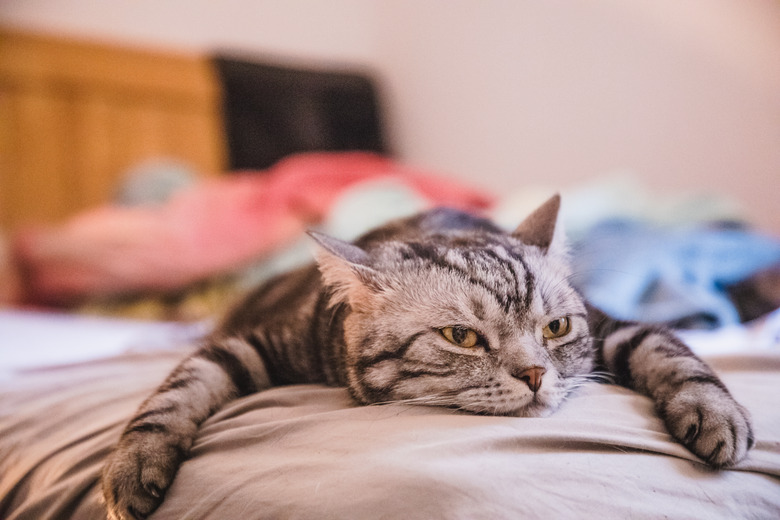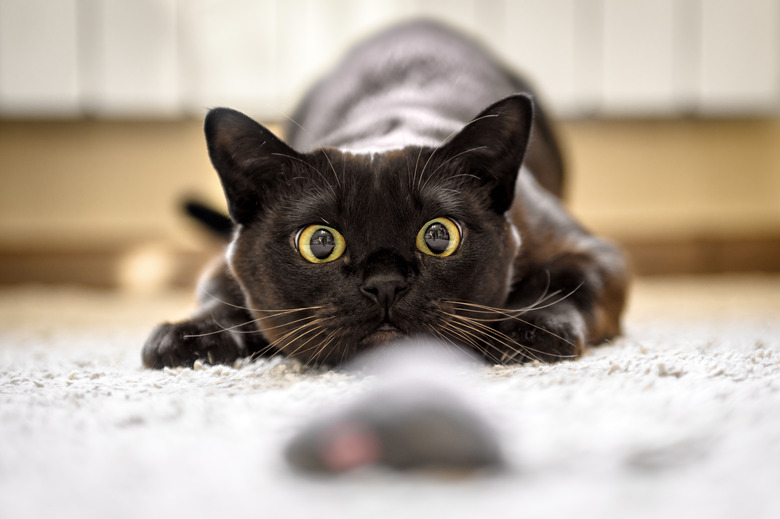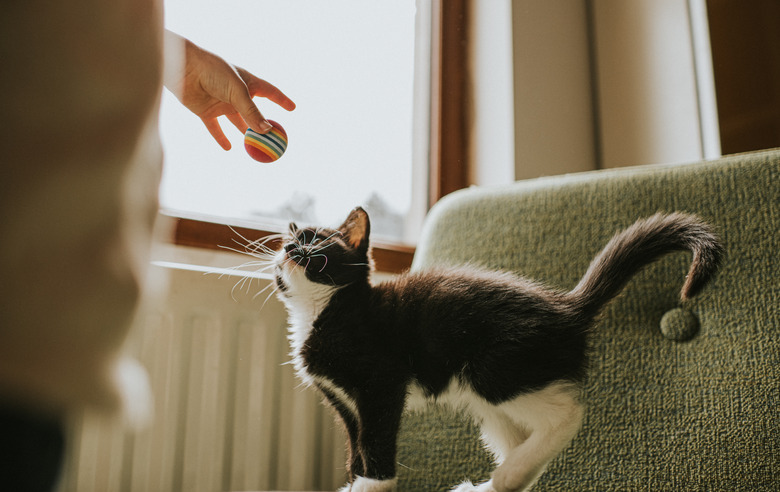How To Tell A Male From A Female Cat
There are many factors to consider when you're looking for a new cat. The cat's sex might be one of them, especially if you already have cats in the house who haven't been spayed or neutered. If you don't know how to tell if a cat is male or female, looking at the genitals (also known as sexing) is the most accurate at-home method of finding out. There may also be some physical and behavioral traits that can help you get an idea.
Sexing a kitten
Sexing a kitten
It isn't easy to tell the sex of a kitten, especially when they're very young. Don't try to sex kittens who are younger than 2 weeks, as it can be a stressful experience, it's too difficult for most people, and it could affect the maternal bond. It's easiest to sex kittens when they're at least 8 weeks old because their developing genitals become more visible.
To tell the sex of a cat, start by lifting the tail and you'll see the anus with the genitals underneath. Both types of cat genitals may look identical at first glance, but there are subtle differences that can help you tell the difference. A female cat's vulva is so close to the anus that they're almost touching, and looks like a vertical slit or the shape of a teardrop. A male cat's penis will probably be hidden, and depending on his age, so might his testicles. The prepuce, which is the skin around his penis, is a bit farther away from the anus compared to a female, and it is shaped like a circle.
If your kitten is between 6 and 10 weeks old and male, you probably won't be able to see his testicles, but you may notice excess fur between the anus and the prepuce, where his testicles will form. You could also gently touch the area and see if you feel two small, oval-shaped objects. If you do, the kitten is male.
Female vs. male cat behavioral traits
Female vs. male cat behavioral traits
There are differences in behavior that may hint at a cat's sex. Contrary to popular belief, male cats actually tend to be friendlier and more affectionate than female cats. They also may be more playful and energetic. If you bring home a male cat, don't be surprised if he often gets the zoomies or wakes you up in the middle of the night while he's playing his cat games.
Female cats are thought to be more independent and may not be as inclined to make friends with other cats. If you need to leave your cat home alone for hours during the day, female cats may tolerate this better and may entertain themselves throughout the day. While they may not be as affectionate as male cats, you might notice your female staying by your side and wanting to care for you when you're sick.
Remember that every cat is different, and their personality also depends on their breed or coat color, whether they've been neutered or spayed, how they're raised, and even the personality of their owner.
Coat color could be a hint
Coat color could be a hint
Your cat's coat color might give you a clue as to whether you have a male or female cat. Most orange cats are male, and almost all calico or tortoiseshell cats are female. This is all thanks to genetics. Cats have two sex chromosomes, one from each parent. They get one X chromosome from the mother and either an X or a Y chromosome from the father. Cats with two X chromosomes (XX) are female, and cats with one X and one Y chromosome (XY) are male.
The gene for a red (or orange or cream) coat color is passed through the X chromosome. Since males only have one X chromosome, whether they have a red coat or not is determined by the mother. Female cats require the red coat gene on both X chromosomes to end up with an all-red coat. Whether the mother is black or orange, her male kittens will be the same color unless she has a tricolor coat (calico or tortoiseshell). In that case, her male kittens will be either orange or black, not both. The exception would be if the male cat has an extra X chromosome (XXY), but this is extremely rare.
A female kitten can have a mixed-color coat if one of her parents has an orange coat and the other has a black coat. Otherwise, she may have a mixed coat or whichever color is most represented between both parents. If one parent has a black coat and the other has a calico coat, she'll have either a black or calico coat. If one parent has an orange coat and the other has a calico coat, she'll have either an orange or calico coat.


